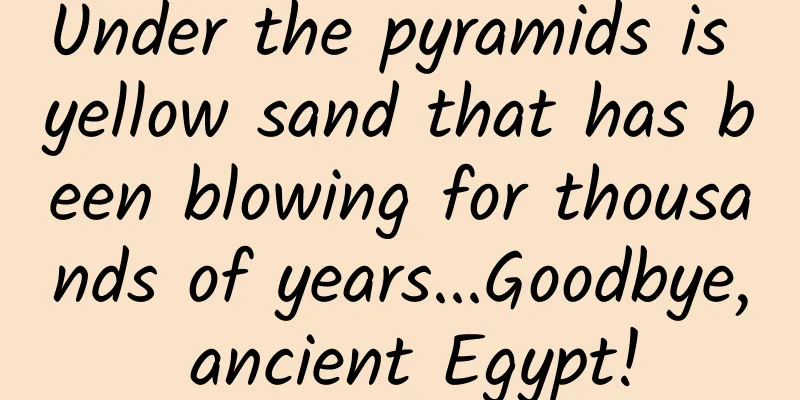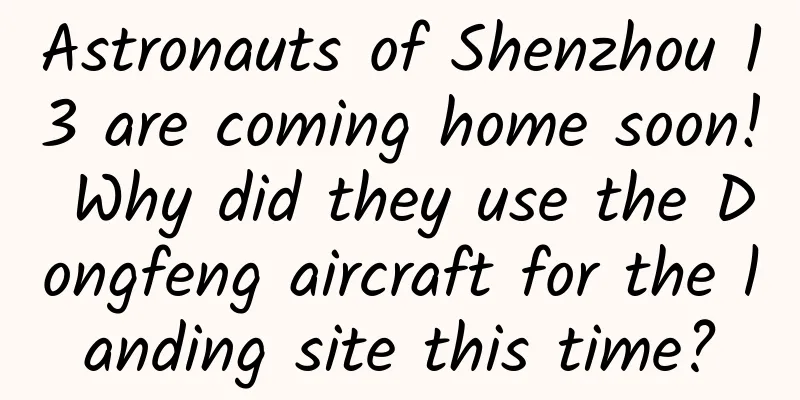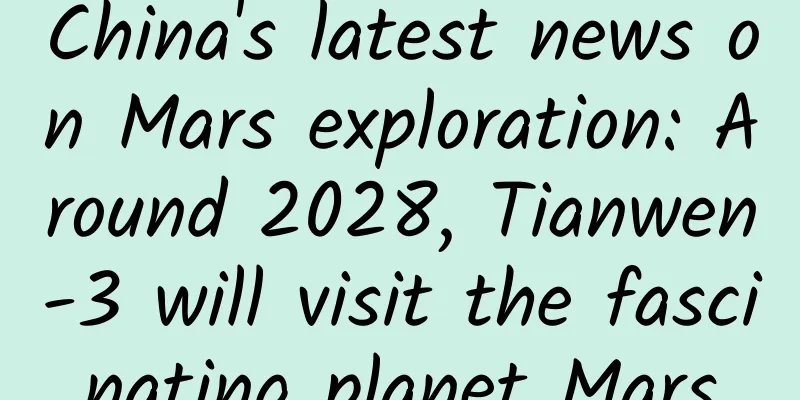Under the pyramids is yellow sand that has been blowing for thousands of years...Goodbye, ancient Egypt!

|
People say Her building is so magnificent How could such wisdom be possible four or five thousand years ago? It must have been made by aliens. (Please view the Giza Pyramids in horizontal mode, image source: Visual China) ▼ People say Her ritual is so weird How could a corpse from four or five thousand years ago be preserved? It must be a curse (Tutankhamun's golden mask, the mummies of ancient Egyptian kings usually wore masks, picture source @Visual China, map @Li Xueqian/Planet Research Institute) ▼ here it is Ancient Egypt An extremely precocious civilization 5000 years ago Chinese civilization has just awakened She has invented the world's earliest paper and the earliest written symbols. And the first Gregorian calendar with 365 days in a year, which is still used today (Please watch the hieroglyphics of the Temple of Hathor in horizontal mode. The characters of the same period as ancient Egypt include the cuneiform characters of the Mesopotamian region. Image source: Visual China) ▼ However, this is also Ancient Egypt A civilization shrouded in doubt 1400 years ago During the Sui and Tang Dynasties She has disappeared The remains left behind have become the Witchcraft, superstition, aliens A fictional civilization that doesn't even exist (1963 version of the movie "Cleopatra", ancient Egypt has also become a popular theme in film and television dramas and comics, picture source @Visual China) ▼ Which one is the real ancient Egypt? What exactly happened to her? Why is it so mysterious? 01 A miracle from heaven The Original Mystery of Ancient Egypt From a mysterious river - the Nile It is located in the northeastern corner of the Sahara Desert. Hidden by the endless yellow sand 7000 years ago A Sahara tribe is looking for it As the climate becomes increasingly dry The riverbed in the area where they originally settled has dried up. The whole family had to migrate and look for another water source. (Sahara Desert, the Sahara was once a grassland, and returned to desert around 4900 BC, picture source @Visual China) ▼ According to legend, there is a river valley in the east that is suitable for living. They crossed the Sahara Migration eastward Over the sand dunes Across the desert (Black Desert, since 7500 BC, Sahara tribes have briefly visited the Nile Valley in the summer and then returned to the western Sahara, picture source @Visual China) ▼ final A rushing river appeared before their eyes. Nile River The world's longest river Total length: 6,650 km It flows through Tanzania, Burundi, Rwanda, Congo, Uganda, Sudan, South Sudan, Ethiopia Until Egypt Across 9 countries Flows from the East African Plateau to North Africa (Map of Egypt's topography, drawn by @昕恬/Planet Research Institute) ▼ Saharan tribes enter the Nile from the Western Desert They walked through the towering desert What comes into view is a river valley with lush grass and water. Here is a long and narrow plain The banks are covered with lush green plants (Please view the Nile River Valley in horizontal mode. The width of different river sections varies, with the widest reaching more than ten kilometers. Image source: Visual China) ▼ Go North The terrain is lower The Nile River flows through loose sand Forming an oasis (The Fayoum Oasis is the largest oasis in the Nile River Basin. In addition, there are many oases in the Western Desert, including the Bahariya Oasis shown below. Image source: @Visual China) ▼ Or spread across the coastal plains Divided into many tributaries Outline a fan-shaped delta Eventually it flows into the Mediterranean Sea (Please view the northernmost port of Alexandria in horizontal mode. Image source: Visual China) ▼ For the Saharawi people The Nile is a miracle from heaven In an increasingly arid climate The Nile will not dry up. On the contrary, it floods regularly every year. An endless stream of water flows in from the south (Aswan section of the Nile River in southern Egypt, image source @Visual China) ▼ Source of the Nile On the remote East African plateau From April to June every year, the northern hemisphere enters summer. The plateau intercepts the monsoon moisture Large-scale rainfall Provides most of the water in the Nile River Enter flooding period (Summer precipitation in Africa. The Nile River has two sources, Lake Victoria and Lake Tana. Map by @昕恬/Planet Research Institute) ▼ The Nile flows from its source Heading North Over the plateaus and valleys Washed away rock debris, dissolving rich minerals Forming nutrient-rich humus soil Flowing through waterfalls (Blue Nile Falls, Ethiopia, image source @wikimedia commons) ▼ Across the grassland (Giraffes, antelopes, gorillas, and hippos in Africa, image source: Visual China) ▼ Finally Entering Egypt Through the flood year after year Developed into a fertile alluvial plain Bringing the possibility of farming to the desert (Please watch the Nile River at sunset in horizontal mode, image source: Visual China) ▼ As the climate becomes increasingly dry More and more Saharawi peoples are migrating to the Nile They slowly adapted to the new geographical environment Understand the law of Nile River flooding A vibrant prehistoric civilization was born because of the river People in the narrow river valley Livestock breeding, grazing, fishing (Cattle are one of the important livestock. The picture shows an ancient cattle breed in Africa, the Ankora longhorn cattle. Image source: @Visual China) ▼ The vast delta Influenced by the farming culture of West Asia People grow wheat and flax along the river (Herodotus, Histories) ▼ "Farmers there just have to wait for the river to overflow on its own. It flows to the fields for irrigation and then returns to the riverbed. Then everyone spread the seeds on his own land, Let the pigs step on the seeds. After that, it’s just a matter of waiting for the harvest.” (Farmland on the west bank of Luxor. Farming technology later spread to the river valley and became the most important production method in ancient Egypt. Image source: @Visual China) ▼ Every year when the Nile flood season ends The river receded, revealing the high land The ancients called this phenomenon of hills rising from the water Seen as the beginning of creation Legend has it that a lotus flower grew out of the water. The sun god was born in the lotus. He brought light to the world, then created air, water vapor Time begins to flow therefore Whether it is the sky, the earth, the bull, the cat The ancients believed that all things were incarnations of gods. People use their image as a symbol Hieroglyphics took shape quietly (Buges sacred bull relief, the sacred bull wears the sun wheel on its head, photographer @张琪) ▼ Different regions worship different gods People named it in hieroglyphics In the second half of the fourth millennium BC Dozens of prehistoric towns gradually emerged in the Nile River Basin They play a vital role in commerce, technology transfer, and war. Mutual annexation and integration The southern valley is called "Upper Egypt" The northern delta is "Lower Egypt" (Please watch Elephantine Island, the southernmost island of Upper Egypt, in horizontal screen. The ancient Egyptians called the place where they lived "Black Land", which was divided into "Upper and Lower Lands". "Egypt" was the name given by later generations. Image source: Visual China) ▼ At this time in faraway China Liangzhu culture just emerged The Nile River Basin hidden in a corner of North Africa It is already a lively and vibrant atmosphere Around 3100 BC A strong king through war and marriage Successfully unified "Upper Egypt" and "Lower Egypt" A kingdom full of vitality - Ancient Egypt Born 02 Eternal Life Pyramids, mummies These cultures are difficult for modern people to understand For ancient Egypt It is the important foundation for the operation of its kingdom. Because this is the first time that every king of ancient Egypt ascended the throne A ceremony that must be planned - Construction of mausoleum (The Pyramid of Khafre, the pyramid is the royal tomb of ancient Egypt, picture source @Visual China) ▼ In the eyes of modern people Building a mausoleum is a large-scale project It requires a lot of time, money and manpower However, for the ancient Egyptians This is not a project It was a religious ceremony to honor the king. (Golden Mask of Amenempu. The ancient Egyptian king lived in a huge palace. During the New Kingdom, people referred to it as the "Great Palace", which is pronounced as "Pharaoh". Image source: @Visual China, map by @Li Xueqian/Planet Research Institute) ▼ King of Ancient Egypt He is both the king of a country and the god of the world. Respected as "Son of the Sun God" Among the many gods The sun god is the most important People think the world works according to its own laws On the first day of every year, the sun god would raise the water level of the Nile River. People created the solar calendar based on this, dividing the year into Flooding season, growing season, harvesting season It is the law of the sun god that enables people to have a good harvest every year The king of a country must be as great as the sun god (In ancient Egypt, there were many gods related to the sun, such as Ra and Kepal. Obelisks were built to honor the sun god. The picture shows the obelisk of the Karnak Temple. Image source: @Visual China) ▼ The sun rises in the east and sets in the west People also live according to their rules The Nile River Basin is divided into 42 administrative districts. Where the Sun Rises Mostly people's daily residence On the contrary, the place where the sun sets is the resting place of the dead. (Map of ancient Egyptian towns. Upper Egypt has 22 administrative districts and Lower Egypt has 20. Most of the tombs are located in the west. Map by @昕恬/Planet Research Institute) ▼ In the eyes of the ancient Egyptians The sun sets and it will rise again People can be reborn after death Life is eternal. The king is the son of the sun god Must have eternal life like the sun Therefore, we only need to build a mausoleum for him to prepare for his rebirth. Eternal Life Is a Share for All (The world's first pyramid, the Djoser Pyramid, was built by King Djoser in the 27th century BC. Image source: Visual China) ▼ In pursuit of eternity A project of living towards death has begun First up is the most learned group in ancient Egypt. priest They are proficient in astronomy Ability to determine the location of the mausoleum through astrology Proficient in mathematics, able to calculate and plan projects You can also leave records through text Developed a highly developed knowledge system (Texts on papyrus, priests collected a large number of scriptures to protect the king's rebirth. Depending on the carrier, it developed from pyramid inscriptions to coffin inscriptions and books of the dead. Photographer @梦物如颜) ▼ Next on the scene is the “state organ” of ancient Egypt Officials They each have their own duties and the division of labor is orderly There are officials who manage taxation Responsible for the production of bread, pottery, beer and Dedicated to the king, the royal family and the priests Develop a complete tax system (The offerings from each administrative district, "Gnom" means administrative district, picture source @Cleveland Museum of Art, marked @李雪茜/Planetary Research Institute) ▼ There are officials in charge of engineering Responsible for coordinating the required materials Large amounts of stone, gold, and copper Loaded onto reed boats and wooden boats And on large cargo ships that can carry hundreds of tons of cargo Transport to the project area via the Nile River Form a smooth transportation system (Please view Dahab in the Sinai Peninsula in horizontal mode. Ancient Egyptians went to the Sinai Peninsula to mine turquoise and copper all year round. Image source: @Visual China) ▼ The last to appear is the pious civilian They believe that building a mausoleum is a very noble thing. A large number of civilians either traveled far to remote border areas Collect and cut the required stones and minerals Or temporarily live near the project area According to the instructions of officials, they moved stones and built the mausoleum. (The Nubian Desert south of ancient Egypt contains a large amount of gold mines, and mining teams often go there. Therefore, Nubia is influenced by ancient Egyptian culture. The picture shows the Nubian pyramids. Image source: @Visual China) ▼ Some civilians who are skilled in crafts Then make the ore into something for the king to use after his rebirth. Headdress, necklace, ring, armband Bed, stool, slippers, board games The most important thing is to protect the king to pass through the underworld smoothly. amulet (Ancient Egyptian amulet, image source @Visual China & Metropolitan Museum of Art, map @Li Xueqian/Planetary Research Institute) ▼ For the King Building a mausoleum can gather the wealth of the kingdom It can also strengthen the management of various regions With the devout participation of priests, officials, and civilians A theocratic regime that combines divine power and royal power Gradually mature The Pyramids, a miracle that is incredible to modern people In this unique divine regime Build one by one (Please view the restored diagram of the ancient Egyptian royal tomb in horizontal mode. The pyramids have different colors due to different stones. Map by @李雪茜/Planet Research Institute) ▼ The construction of the mausoleum lasted for more than ten years. On the day of the king's death The body will be made into a "mummy" by a priest who is good at medicine. Meaning: mummy Preserved intact for rebirth (Sketch of the mummification process, image source @Cleveland Museum of Art, map @Hanqing/Planetary Research Institute) ▼ The priests chanted the verses to protect the king Place the mummy in a coffin made of pure gold Two-layer coffin Three-layer coffin Then put it into layer after layer of coffins (Tutankhamun's coffin, image source @wikimedia commons, map @李雪茜/Planetary Research Institute) ▼ The king's coffin was carried on a specially made "sun boat" Crossing the Nile Entering the Tomb Finally, sealed in a secret inner chamber (Sketch of the internal structure of the pyramid, drawn by @李雪茜/Planetary Research Institute) ▼ People believe The mausoleum is like a "ladder to heaven" The king's life will rise from the highest point to the sun Finally reborn, with the gods Successor King The ritual will be used to become one with the life of the previous king. To inherit his divinity The life of the "Son of the Sun God" is passed on continuously in this way. By King Mentuhotep I Passed to Mentuhotep II Passed on to Mentuhotep III Passed to Mentuhotep IV In people's eyes The king's divinity is as eternal as the sun In the King's Eyes Its royal power can also be passed down through the inheritance of divine power and last forever. (Temple of Ramses II in Abu Simbel. Ancient Egypt had multiple kings with the same name, and scholars distinguished between them as the first and the second. Image source: Visual China) ▼ Ancient Egyptian Kingdom In this way, we continue to grow in the pursuit of "eternity" 16th century BC The Shang Dynasty just rose Ancient Egypt relied on the fertile Nile River basin And the unique God-King regime Has grown into a mature and wealthy empire Next she will face the north wind World Domination 03 The Center of the World Some people once said that ancient Egyptian civilization is fictional. Because it is rarely seen in the history books of other civilizations See her trace However, in West Asia Hittite, Assyrian, Mitanni and other great powers Ancient Egypt was a country with a great military record. A powerful opponent that is difficult to surpass (War relief of Ramses II. Kings of the New Kingdom often appeared as military commanders. Image source: @Visual China) ▼ Mid-17th century BC Several groups of people from Palestine fled to escape the war. Entered the Nile River Basin with chariots and weapons At this time, the water level of the Nile River in ancient Egypt dropped Famine and unrest The originally unified regime was divided into local forces The invasion of foreign groups escalated the situation. Ancient Egypt fell into a century of division and civil strife The King in Troubled Times No longer just a noble god king You must also be a brave military commander to quell the war. So, after the war A brave and warlike ancient Egypt is reborn from the ashes Relying on superior military strength to expand the territory to West Asia (Many small countries in Palestine swayed between ancient Egypt and the big countries in the Mesopotamian region. The picture below shows the ancient city of Megiddo. Image source: @wikimedia commons) ▼ 1457 BC A young king, Thutmose III, had just come to power. The small countries in West Asia that were vassal states of ancient Egypt united to rebel. So he decided to launch an expedition He selected an elite army and headed to West Asia final Syria-Palestine: a small country Defeated by a well-trained army Only to surrender (Karnak Inscription on the Battle of Megiddo, No. 94) ▼ "Bow down before your majesty, kiss the ground, Pray for them to breathe." Ancient Egypt thus established its position in the West Asia-North Africa region. Dominance (Please view the New Kingdom territory in horizontal mode. Thutmose III launched 17 expeditions, the farthest expansion being to the Euphrates River. Map by @昕恬/Planetary Research Institute) ▼ Looking around the world at this time, there is no country more powerful than ancient Egypt. The Rise and Fall of the States in the Mesopotamian Region The alliance of small countries in West Asia gathers and disbands Only ancient Egypt had a stable regime Society operates in an orderly manner As the territory expanded, wealth also increased greatly (Amarna Letters) ▼ "Gold is as plentiful in your country as dust, You just have to collect it.” (Luxor Temple, the wealth gained from war and trade was used to build temples and tombs, picture source @Visual China) ▼ Looking across the Mediterranean, there is no land safer than the Nile River Ancient Egypt's military might was unrivaled Its natural geographical environment is impeccable East of the Nile The vast Red Sea is a natural barrier (Please watch the Red Sea in horizontal mode. Many tributaries of the Nile River have been built into waterways connecting to the Red Sea, and there are many trade exchanges with Siadiya. Image source: Visual China) ▼ West of the Nile The endless desert is difficult to cross (Please watch the White Desert in horizontal mode, bordering the Libyan Desert west of Egypt, picture source: Visual China) ▼ Desert, sea Confining ancient Egypt to the narrow Nile River basin For the King Even if we conquer the territories of other civilizations There is still no land better than the Nile The agricultural products here are rich Military is easy to defend but difficult to attack This was the center of the ancient Egyptian world. Therefore, no matter how much territory is occupied Finally, we have to return to our roots, to the Nile River Basin (Please watch Luxor in horizontal mode. It was part of Thebes, the capital of the New Kingdom. Image source: Visual China) ▼ At the center of the world The king's ultimate goal is Keep the world as it is The best compliment to a king is: (Yan Haiying, "Pious Forgery") ▼ “Behold, his reign will be like the reign of his father” Therefore, successive kings liked to "expand" Expand the existing town Expansion of the original palace The original temple was expanded, expanded, and expanded again (The Luxor Temple is connected to the Karnak Temple to the north by a nearly three-kilometer-long Sphinx Avenue. Image source: Visual China) ▼ The most important thing is eternal life During this period, the king no longer built pyramids Instead, the rocky desert on the west bank of the Nile was carved into a tomb. Expand, expand, and expand underground space Forming a mausoleum complex with 63 tombs Valley of the Kings (Exterior view of the Valley of the Kings and the interior tombs, image source: @Visual China & Wang Rui) ▼ The ancient Egyptians believed they were born at the center of the world His life's mission is to keep the world going. We must restrain ourselves with moral standards Cannot disrupt the existing order (Book of the Dead, Chapter 124) ▼ “I didn’t steal the dead man’s cake; I have not added weight to the scales; I have not killed anyone; I have not committed adultery; I didn’t take the child’s milk…” (Sunrise at the Karnak Temple. After death, people must pass the judgment of the god of death before they can be reborn. Photographer @歪杰) ▼ Ancient Egypt was at the center of the world. Old Kingdom - Middle Kingdom - New Kingdom The Three Kingdoms Period Unification, division, reunification, division, and so on. First Dynasty Second Dynasty Third Dynasty Until Thirty-first Dynasty A full 3000 years However, in this seemingly stable order Some changes are happening quietly (Sinai Peninsula, the only way to enter ancient Egypt from West Asia, picture source @Visual China) ▼ The Nile River, always so fertile From 13th century BC A large number of Libyans, Nubians, Syrians, Palestinians migrate to the Nile Valley Ancient Egypt's population rises to 3 million As long as the Nile continues to flood People only need to dredge the river siltation, increase planting That is, it can increase food production and feed the whole country However, in addition to agricultural advantages The Nile River's habitable area has shrunk as the population has exploded There was no increase in arable land Deserts and seas have trapped millions of people along the river banks. The fertile river gradually became an inescapable siege (People in the Old Kingdom used baskets to fetch water, in the Middle Kingdom they carried buckets on their shoulders, and in the New Kingdom they invented hanging buckets. There was no fundamental change in farming technology. Image source: Visual China) ▼ The God-King's rule has been so stable for thousands of years The kings of the New Kingdom still regarded themselves as "sons of the sun god" Offering the wealth gained from war to the gods However, wealth was transferred to the priests through sacrifice. As time went by, the priests gradually gained real power Form a force that can threaten the king's power 13th century BC A king once launched a religious reform to weaken the power of priests. However, its influence has penetrated every corner of society The reforms failed The stable rule of the God King gradually became an inescapable dilemma The balance between divine and royal authority is becoming increasingly unsustainable (King Akhenaten launched reforms for more than 20 years, during which time religion, culture and art underwent great changes. The picture shows his queen Nefertiti, photographer @徐同学, map @李雪茜/Planet Research Institute) ▼ Late New Kingdom As population increases, class struggle gradually emerges in society The ruling class also has financial problems due to corruption and fraud The Dilemma of Ancient Egypt In this way, it is tightly entangled with the arrogance of its overlord 1312 BC Ramses II, a high-spirited king Even if the expedition fails He also returned to the country and declared that he had won a victory. (Pu Muzhou's "Literary Talent on the Nile River") ▼ "I chased them like a beast, I attack all enemies alone" In fact, due to the domestic difficulties Ancient Egypt had no time to worry about external wars The hegemony in West Asia is gradually weakening (The Temple of Ramses II in Abu Simbel by Lake Nasser. The king of the late New Kingdom built a lot of buildings, which also led to a financial crisis. Image source: Visual China) ▼ Internal stability and external power Like a scale that is difficult to balance While ancient Egypt was still carefully adjusting Little did they know that there was a more powerful enemy Already appeared 04 The Last Storm Why did ancient Egypt disappear? The answer to this question Hidden in the ever-changing Mediterranean 31 BC Cleopatra VII, later known as the "Queen of Egypt" Waiting for a reply A few months ago, she sent her navy to Greece Aid his ally, the Roman general Antony Hoping to defeat their common enemy But a few months later Anthony still has no response. This reply will determine the fate of ancient Egypt (Corfu, Greece. In 31 BC, Antony allied with ancient Egypt and launched the Battle of Actium with his opponent Octavian on Corfu. Image source: Visual China) ▼ Long before Cleopatra VII was born The fate of this vast empire has repeatedly drifted The edge of destruction and survival 11th century BC In faraway China, King Wu defeated King Zhou and established the Zhou Dynasty However, ancient Egypt was caught in a dilemma of internal and external troubles. Libya, Nubia, Persia and other ethnic groups successively seized power Self-proclaimed God King in the Nile River Basin This situation continued until 332 BC. Alexander the Great - Young King of Macedonia Came to Egypt and was crowned king He appointed his general Ptolemy as governor to govern Egypt (Please view the Royal Docks of Alexandria in horizontal mode, image source: Visual China) ▼ Ptolemy I Cleopatra VII's ancestors He brought with him the Greek method of administration Retain the God-King government At the same time, positions such as Minister of Finance and Garrison General were set up Weakening the power of the priests This will establish a hierarchical management system with clear responsibilities. The Ptolemy family that succeeded him used this method to govern the country. Gradually restored the power of ancient Egypt (During the reign of the Ptolemaic family, many temples were built. The Temple of Hathor in the picture below is one of them. Photographer @Visual China) ▼ The Ptolemaic family also preserved the agricultural traditions of ancient Egypt At the same time, Greek soil improvement and irrigation technology was introduced So that people can grow wheat You can also cultivate orchards and gardens, grow grapes and roses Developing handicraft industry Produces papyrus, beer, flax, glass, alabaster Exported to various parts of the Mediterranean via seaports Ancient Egypt's economy recovered quickly Transformed into the largest "granary" around the Mediterranean (Egyptian farmers and loofahs. In addition to being edible, loofahs can be made into bath sponges and their seeds can be used to extract oil. Image source: Visual China) ▼ Under the rule of the Ptolemaic family Ancient Egypt was able to escape from its past difficulties Restoration Turning to a bigger world The world is in turmoil Persia, Athens, Sparta, Rome, etc. Several Mediterranean civilizations rose in turn Who can compete with us in war, plague and technological revolution? (Acropolis of Athens, Greece. The 5th to 4th century BC was the heyday of ancient Greek civilization, and its influence radiated across the Mediterranean region. Image source: Visual China) ▼ When Cleopatra VII was growing up Ancient Egypt's former rivals in West Asia have disappeared However, constrained by the many civilizations of the Mediterranean It is difficult to regain the dominant position Cleopatra VII knew this well. So when she was 21 years old, she was officially crowned as the God King During his reign, he used more aggressive diplomatic tactics Mediating between many forces 44 BC The Roman Republic splits Cleopatra VII seizes her opportunity Joined forces with Antony, one of the Roman triumvirate Fighting against other forces (The Roman "Big Three" Octavian, Antony, and Lepidus each occupied one side and competed for the position of supreme ruler. The picture shows the Colosseum in Rome, which reflects the warlike characteristics of Roman civilization. Image source: @Visual China) ▼ However, in 31 B.C. Antony was defeated and killed Cleopatra VII made the wrong bet His opponents then sent troops to invade ancient Egypt Seeing that ancient Egypt had fallen into the fate of being at the mercy of others Cleopatra VII could no longer turn the tide Eventually chose suicide (Please view the Temple of Isis in horizontal mode. Cleopatra VII often regarded herself as the goddess Isis. Image source: @wikimedia commons) ▼ The Roman army marched into ancient Egypt But I found that this place has become another "Greece" 300 years of Ptolemy rule Greeks had become the dominant group in ancient Egyptian society Egyptians had low status More and more Egyptians are choosing to move closer to Greek culture (Liu Wenpeng, History of Ancient Egypt) ▼ "They despise me because I am a barbarian I don’t know how to act like a Greek” (Style comparison of pharaoh statues, the first two are ancient Egyptian style, and the last is Greek style, picture source @wikimedia commons, map @李雪茜/Planet Research Institute) ▼ The ancient Egyptians originally spoke Egyptian However, the official language of the Ptolemaic dynasty was Greek. in this case The ancient Egyptian language gradually changed A "Coptic" language emerged that combined the Greek alphabet Greek civilization has deeply penetrated this land (Hieroglyphs gradually became a type of writing used only in religious places. Later, as Christianity became the state religion of the Roman Empire, hieroglyphs eventually died out. Image source: @Visual China) ▼ Ancient Egyptian civilization before the gears of time Forced to turn But the trajectory of the turn has been a challenge for generations of Egyptians. But it's so slow that it's hard to notice As the Roman Empire and the Arab Empire successively ruled The Christian and Islamic civilizations they brought Gradually, the unique worship of the god king in ancient Egypt Erased from people's consciousness (The Muhammad Ali Mosque faces the slums, picture source: Visual China) ▼ With the invasion of France and Britain Ancient Egypt stumbled into the modern era amidst struggle People build a dam at Aswan at the southern end of the Nile Through power generation and flood storage Promoting more diversified economic production As Egyptians gradually embrace the wave of modernization Left the worship of the Nile (Cairo bazaar, modern Egypt no longer relies solely on agriculture, and nearly half of the national economic income comes from tourism. Image source: @Visual China) ▼ Such Egypt Walking slowly in the long river of time for two thousand years Until I look back Only to find that the former civilization is no longer there (The life and death of ancient Egyptian civilization, after the Ptolemaic dynasty, it entered Roman rule, Arab rule, Ottoman rule and British colonial rule, picture source @Visual China & Metropolitan Museum of Art & Wikimedia Commons & Zhang Qi, map @Li Xueqian/Planet Research Institute) ▼ When did the ancient Egyptian civilization disappear? Some say he was the last God King. ——The year Cleopatra VII committed suicide Others say it was the year when Alexander ruled Egypt. That is, before the gradual Hellenization of ancient Egypt However, for the people living on this land This is an unsolvable puzzle Because the grandeur of thousands of years ago is still (Temple of the female pharaoh Hatshepsut, picture source @Visual China) ▼ The Nile River, which has been flowing for thousands of years, is still flowing. (The luxurious yacht and the Temple of Kom Ombo are like a gaze between the ancient and modern times, picture source: Visual China) ▼ The desire for life is still there (Medina Habu Temple, picture source @Visual China) ▼ However, ancient Egyptian civilization But has quietly said goodbye in the long years What's left is only the unfinished love (Adapted from Book of the Dead) ▼ A man who loves Thebes and lives in Thebes May you live a million years May you face the north wind May your eyes see beautiful places (Please watch the pyramid in the wind and sand in horizontal mode, image source: @Visual China) ▼ This article was created by Written by : Isis Image : Xu Ying Design : Li Xueqian & Han Qing Map: Xintian Proofreading: Huang Taiji & Li Chuyang & Zhou Jinyu Cover source: Visual China Audit Expert Xu Shiwei, Associate Professor of History Department, Nankai University Professor Yuan Zhihui from the School of History and Culture of Tianjin Normal University Li Zhi, Assistant Professor of History Department, Sun Yat-sen University Note [1] Mainstream academic circles generally believe that the Narmer Palette, unearthed between 3200 and 3000 BC, marks the beginning of ancient Egypt’s entry into civilization. However, the identity of King Narmer and whether he was the first king to unify Upper and Lower Egypt remains controversial. 【References】You can scroll up and down to view [1] Wilkinson, T. (2010). The Egyptian world. Routledge. [2] Shaw, I. (2003). The Oxford History of Ancient Egypt. Oxford University Press. [3] Yan Haiying. Watching for Harmony: Exploring the Mysteries of Ancient Egyptian Civilization[M]. Yunnan People's Publishing House, 2004. [4] Kemp, BJ (2006). Ancient Egypt: Anatomy of a Civilization. Psychology Press. [5] Wilkinson, T. (2013). The Rise and Fall of Ancient Egypt. United States: Random House Publishing Group. [6] Rzóska, J. (2012) The Nile: Biology of an Ancient River. Germany: Springer Netherlands. [7] Moeller, N. (2016). The Archeology of Urbanism in Ancient Egypt: From the Predynastic Period to the End of the Middle Kingdom. United Kingdom: Cambridge University Press. [8] Jin Shoufu. (2023). The origin and characteristics of ancient Egyptian civilization. World History (1), 7. [9] Jin Shoufu. (2010). The process of the formation of the early unified state in ancient Egypt. World History (3), 13. [10] Baines, J., Málek, J. (1980). Atlas of ancient Egypt. United Kingdom: Facts on File Publications. [11] Teeter, E. (2011). Religion and Ritual in Ancient Egypt. United Kingdom: Cambridge University Press. [12] Yoffee, N. (2005). Myths of the Archaic State: Evolution of the Earliest Cities, States, and Civilizations. United Kingdom: Cambridge University Press. [13] Li Yuxiang. (2007). Water conservancy and irrigation in ancient Egypt. Jilin University. [14] Yan Haiying. (2000). “Pious forgery”: the image of the king in ancient Egyptian documents. Foreign Literature (4), 10. [15] Cromwell, J. Ptolemy I and the Transformation of Egypt, 404-282 BCE. (2018). Netherlands: Brill. [16] Jin Shoufu. (2021). Ancient Egyptian Book of the Dead. Commercial Press. [17] Badawy, A. (1967). The Civic Sense of Pharaoh and Urban Development in Ancient Egypt. Journal of the American Research Center in Egypt, 6, 103–109. [18] Pu Muzhou. (2020). History of Ancient Egyptian Culture. Anhui Literature and Art Publishing House. [19] Liu Wenpeng. (2000). History of Ancient Egypt. Commercial Press. Journal of Literature, 2009(03):84-93. [20] Faulkner, RO (1942). The Battle of Megiddo. The Journal of Egyptian Archeology, 28(1), 2–15. [21] Kemp, B. (1977). The early development of towns in Egypt. Antiquity, 51(203), 185-200. [22] Joan Fletcher, & Murray. (2019). Four Thousand Years of Egypt. History Zhejiang Literature and Art Publishing House. |
<<: How does Impatiens “dye” the Chinese colors in ancient poetry?
>>: The hottest pepper has broken the record! Only 5 people in the world have eaten it
Recommend
Wuwei Academy Wuwei Teacher Main Line Capture Dragon Sixth Episode
Introduction to the sixth episode of Wuwei Academ...
Pride and Prejudice: Luo Yonghao's slap in the face and Hammer's return to the ground
Luo Yonghao was slapped in the face again, and th...
Samsung mobile phones have become a thing of the past in the country
Samsung, the only mobile phone manufacturer that c...
What is the Northeast Cold Vortex?
"It started snowing again in April", &q...
Shenzhen Junior and Intermediate Accounting Examinations Cancelled Due to the Epidemic: Will be Postponed to 2021 to Take the Examination or Apply for a Refund
Shenzhen Junior and Intermediate Accounting Exami...
What are the advantages for enterprises to carry out SEM marketing?
If companies want to get more and more accurate c...
Case analysis: Analysis of Alipay’s bounty operation activities in December!
Thinking patterns involved in this brief analysis...
How to calculate the cost of renting a server data center rack?
IDC data center business is flourishing all over ...
Can’t sleep, sleep poorly, not getting enough sleep… 20 ways to solve the “sleep dilemma”, save them now!
About 1/3 of a person's life is spent sleepin...
A magical tool to check on the relationship of all bad men and women? A real test of Gaode Family Map
From the "College Entrance Examination Traff...
Product Operation: 2 major ways to get started to accurately manage private domain traffic!
Ever since WeChat issued a notice to ban check-in...
WeChat group traffic diversion and operation methods!
Nowadays, many people believe that WeChat groups ...
The outstanding appearance of corals is largely due to these “green pearls”!
Zooxanthellae are yellow-brown single-celled alga...
One year after the stimulus policy was withdrawn, the overall home appliance industry is still sluggish
The overall downturn in the home appliance indust...
China's grain distribution map: How much grain do the three northeastern provinces produce each year?
China's grain distribution map Where are the ...









